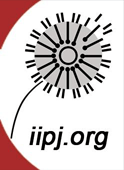Indigenous Mobilisation and the Law of Consultation in Peru: A Boomerang Pattern?
Abstract
Prior to 2009, it was difficult to speak of a national level Indigenous movement in Peru with an impact on national politics. However, the situation changed after the tragic events known as the Baguazo. Little by little, diverse organisations representing different ethnic groups came together to push for a law of consultation, which was promulgated in 2011. Nevertheless, the process has been highly complex and is still ongoing. The aim of this article is to offer some interpretative clues in order to understand how the national level movement came about, as well as how it made an impact on national political processes. Referring to social movement theory and constructivist international relations theory, I analyse several important episodes between 2009 and 2013. I find that both the convergence and the impact of a national level Indigenous movement in Peru are embedded in complex bargaining processes in which issues of ethnicity and political opportunities at the national level have been affected by the leverage of global norms (specifically the International Labour Organisation’s Covenant No. 169) by both international and national actors.
Acknowledgments
The research for this article was undertaken in the framework of the following project: "11-CAP2-1516, Desarrollo y recursos en territorios indígenas. Un trabajo comparado desde los derechos y la participación de las comunidades y los impactos de las intervenciones de los agentes públicos y privados," financed by la Agencia Española de Cooperación Internacional para el Desarrollo (AECID).
Creative Commons License

This work is licensed under a Creative Commons Attribution-Noncommercial-No Derivative Works 4.0 License.
Recommended Citation
Wright, C.
(2014).
Indigenous Mobilisation and the Law of Consultation in Peru: A Boomerang Pattern?. The International Indigenous Policy Journal, 5(4)
. Retrieved from: https://ir.lib.uwo.ca/iipj/vol5/iss4/4
DOI: 10.18584/iipj.2014.5.4.4

- Citations
- Citation Indexes: 10
- Policy Citations: 1
- Usage
- Downloads: 613
- Abstract Views: 181
- Captures
- Readers: 31
